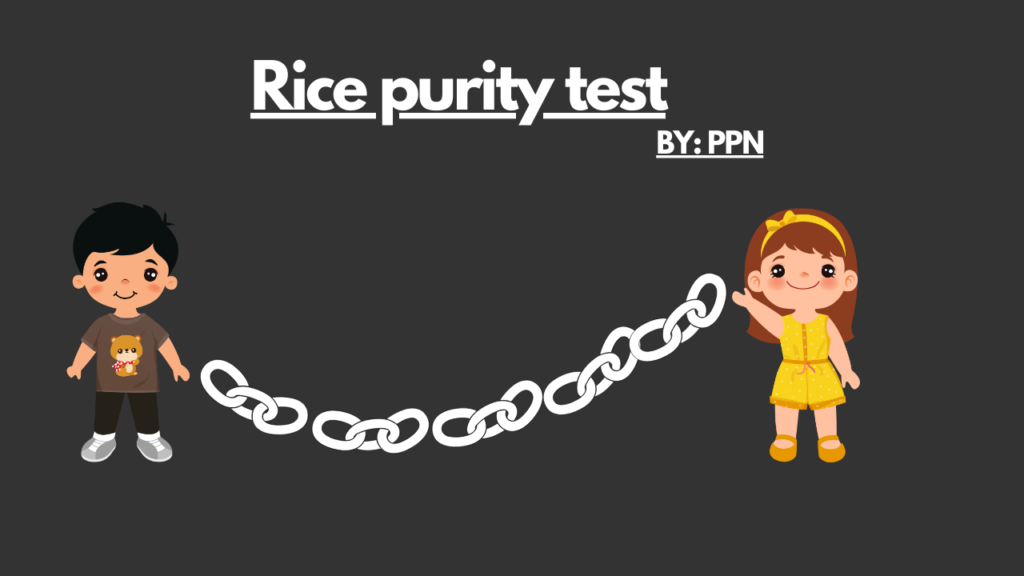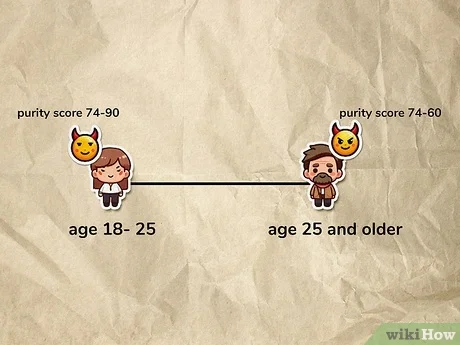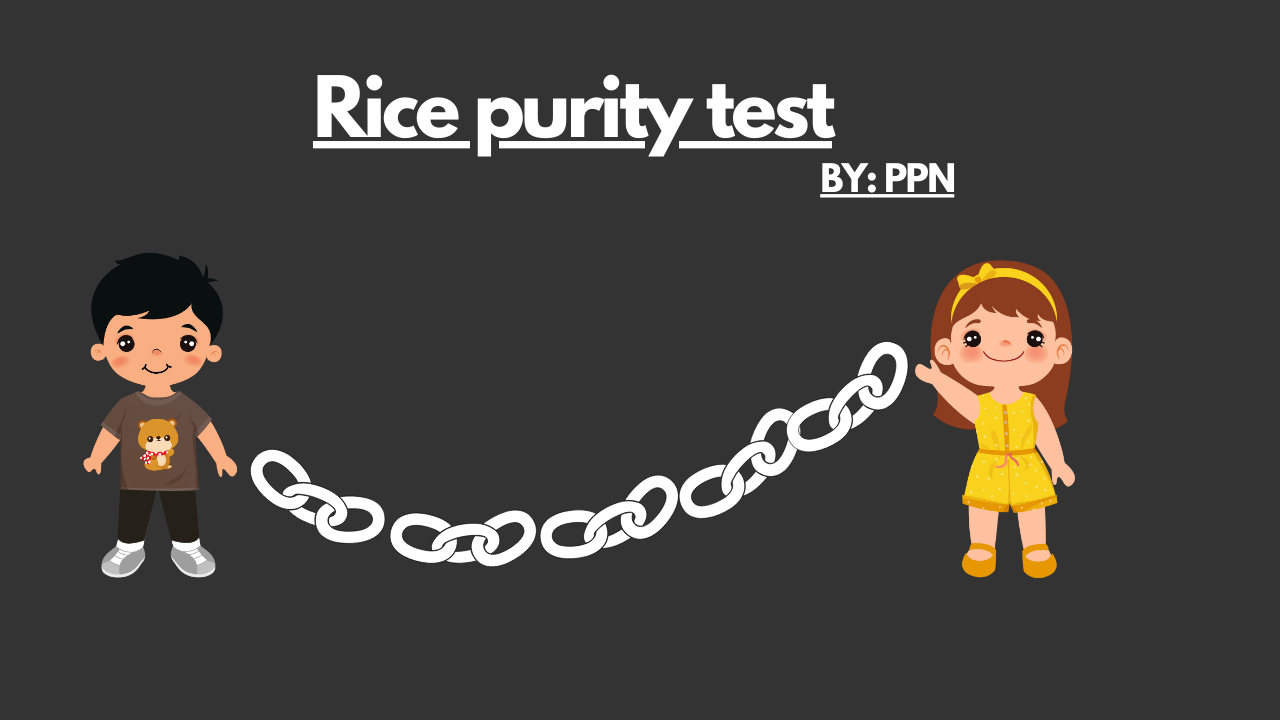
Hey guys, I know that tests are terrible for students, but in the end, they help them get better. Well, some tests can help you change bad habits, get along better with others, and learn more about your feelings. People in their teens and early 20s take these tests, called the “rice purity test.”
Fellow, today, we will discuss the test for pure rice. Now is the time to start the conversation.
Rice purity test score meaning
The rice purity test—also called the RP Test—is a quiz designed to determine a person’s level of innocence or experience in many spheres of life. It covers various subjects, including relationships, drug usage, personal behavior, and social ideals. The score reveals the variety of living events the individual has gone through.
A Justification of the Objectives of the Exam
The assessment was initially designed for undergraduate students at Rice University to engage in self-reflection. The objective was to enhance individuals’ self-awareness and facilitate sound decision-making. Individuals were prompted to contemplate their actions and the potential consequences to foster such reflection.

The Beginning:
The Rice Purity Test, which has evolved into an intriguing online phenomenon, piques many people’s interest. What is the Rice Purity Test, and why is it gathering such popularity? This article will go on its source, score, and reasons behind its popularity.
Rice University, Houston:
The Rice Purity Test originated in the 1920s as an informal means for students to assess each other’s backgrounds and lifestyles. The concept emerged as a jest among acquaintances.
Internet Expansion:
After some time, the exam spread to other schools and eventually gained traction online.
Not only have college students taken the Rice Purity Test since its release, but people of all ages have also done so. It has become a phenomenon in popular culture after becoming viral online. People take the exam to find others with similar experiences or to see how they stack up against peers.
People Who Ought to Take the Test?
Many people take the test alongside friends as a lighthearted approach to get to know one another better and discuss their results. Some people utilize the test to examine their lives, seeing how they have evolved and matured utilizing past events. People might have to take the test in some groups to fit in or obey group policies.
How to Figure Out the Points System:
The Rice Purity Test has 100 questions, each worth 0 to 100 points. A participant’s “purity” is determined by their average ratings on these issues.
Deciphering the Score: A lower score represents a more adventurous or non-traditional lifestyle, and a higher score means a more “pure” or conventional one.
Points of View and Discussions:
Simplification of Complexity: Some have argued that the test is oversimplified since it simplifies complicated human events to a numerical score.
Since the concept of purity is relative, what one individual deems unclean could seem acceptable to another.
The Allure’s Effects on the Mind:
People are interested in the Rice Purity Test because we all like learning more about others and ourselves. It helps people see how their interests, life events, and progress compare to their friends.
The rice purity test: how do most 14-year-olds do?
The Rice Purity Test is a fascinating subject. You’re in the right place if you want to know what score a normal 14-year-old would get on this test. If we dig deeper, we can learn more about these social trends, the test, and the typical results for people this age.
How the exam is set up and graded
The test covers various topics, with 100 questions covering multiple actions or events. A simple “Yes” or “No” response indicates whether or not a person has completed a specific task. A point is awarded to the person for each “Yes” response. By dividing the points by 100, the score is typically shown as a percentage.
How to Read Your Test Scores
The Importance of Rice’s Integrity A person’s test scores can tell much about their innocence or lack thereof; lower scores indicate more life experience, while higher scores indicate pure innocence. This test can only measure a person’s exposure to certain activities; it does not affect their character, value, or worth.
Things that affect test scores
Several factors can influence the Rice Purity Test findings. The uniqueness of each person’s life experiences, cultural background, and peers’ opinions fall into this category. It is critical to consider these aspects when accurately analyzing exam scores.
Effects of Scores on Society
People mostly take the Rice Purity Test for fun and to learn more about themselves. But sometimes, when they see how others did, they talk about how they did. Don’t let test scores change your morals or ideals. Keep an open mind. The main idea should be to see and value what makes each person unique.
Age and Its Effect on Scores
Naturally, people experience more events and exposure as they progress through adolescence. Remember that the average score increases as people age simply because they’ve lived through more. If a fourteen-year-old’s score is ordinary, it suggests they haven’t done much of anything, yet they still managed to get good marks.
Gender Differences in Achievement
Gender disparities in the outcomes of the Rice Purity Test may exist. The results may differ for men and women due to the diverse ways social expectations and stereotypes influence their actions and perspectives. However, keep in mind that there are significant disparities between the sexes and that these differences should not be used to generalize.
Variations Based on Origin and Environment
You may get different average results from the Rice Purity Test depending on your culture and location. People in more conservative communities may have less relevant life experiences, which could explain why their average scores are higher. On the other hand, communities that are more accepting of diversity may have poorer average performance.
Factors That Affect Individual Scores
What factors influence students’ ability to do well on exams
Some factors, not limited to gender and age, could impact a person’s Rice Purity Test result. These factors include one’s social status, religious views, cultural standards, religious practices, and the impact of one’s classmates. An individual’s decision-making process and personal choices also contribute to their score.

The nature and operation of peer pressure
Peer pressure can indirectly influence performance on the Rice Purity Test and majorly impact one’s life and choices. Teenagers are particularly susceptible to their peers’ persuasive power as they navigate the social landscape and develop romantic connections.
Socioeconomic Backgrounds
Inequalities in socioeconomic status can also contribute to variations in academic performance. As a result of their varied experiences, people from diverse socioeconomic backgrounds may
in various ways, both modern and conventional. A person’s financial status can influence their life outcomes and Rice Purity Test scores.
Pedagogical Environment
Rules, relationships, and social standards are examples of how people’s experiences and choices shape their educational environment. Whether or not a student attends a school that believes in them and helps them make good decisions can impact their Rice Purity Test score.
What Are Some Ways To Tell If Rice Is Pure?
While we wait for the test to begin, let us learn about its background and purpose. Twenty-one questions were first proposed at Rice University in 1924 Houston, Texas. Giving college students a self-graded test that asks about things they should know is a good way to determine their maturity.
At first, only women were allowed to take the test. But new copies with more up-to-date questions were just released not long ago. Many people think it’s a great chance for first-year students to meet each other. Question 1 is the easiest, Question 2 is the hardest, and Question 3 is the most important. This is where you can take the test.
How Pure Rice Is and Its History
It worked in the middle of 1924, almost 96 years ago. At first, this test could only be taken by women. They were given writing tests to see how clean or innocent the women were. The test has a few questions: Have you been getting married or dating before? Have you lied to someone? Have you ever been drunk? A lot of the questions were written down.
After that, Rice University created a new test to determine whether the scholars were telling the truth, improve trust in new students, and check whether the scholars were not guilty. This test first appeared online in the early 1990s, before computers were invented. It has 100 questions with “yes” or “no” answers.
What does the result of a Rice Purity Test mean?
However, things can get slightly confusing once you know what the Rice Purity Test numbers mean. When you take a quiz, getting a score of 100 generally means you won because that’s the highest score possible. It’s the other one for the Rice Purity Test, though.
There is a range of scores from 0 to 100 on the test. Based on what you know, a score of 0 means you are the most guilty, and a score of 100 means you are the least guilty. At first, the test was meant to see how grown high school students were. These days, it’s just a fun game to play with friends.
Religion and cultural issues
A person’s religious and cultural background can change how they act, think, and follow rules, which can affect the Rice Purity Test.
In conclusion
Guys, that’s all there is to the rice purity test. This gave you useful information and made you smarter about it. It’s a good test for kids, and everyone should take it. Okay, guys, that’s all for today.






